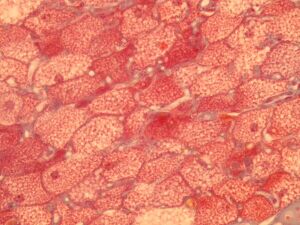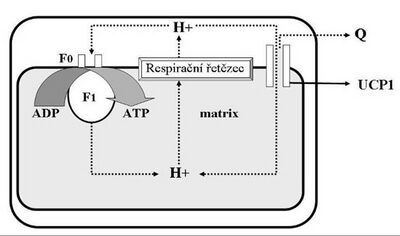Uncoupling - uncoupling
The energy transfer mechanism between the ETC and ATP synthesis can be uncoupled if the reverse flow of protons from the intermembrane space to the matrix is allowed. This ineffective loss of the proton gradient transforms the energy stored in it into its less useful form - heat.
Heat is generally much less useful than, for example, ATP, but there are situations where the ability to produce heat can save life - for example, when an organism is exposed to cold temperatures.
Muscle shivering is a well-known heat-generating mechanism used by humans and other mammals. This process produces heat through inefficient energy transfer during muscle contraction. Newborns and many animals use a different method - uncoupling of the mitochondrial chain (uncoupling) = non-shivering thermogenesis.
Uncoupling the respiratory chain to produce heat takes place mainly in a special tissue called brown adipose tissue.
Brown fat:
- is colored like this because it contains many mitochondria,
- its role is simply to "waste" energy.
White fat:
- stores energy.
Mitochondria of brown adipose tissue contain a special protein that forms a channel in the inner mitochondrial membrane and thus enables the transfer of electrons – UCP-1 (uncoupling protein-1, thermogenin). When brown adipose tissue is activated by noradrenaline (via β3-adrenergic receptors), it hydrolyzes its triacylglycerols and the released fatty acids provide energy for ETC and simultaneously activate UCP-1.
There are also other subtypes of UCP (UCP-2 to UCP-5) expressed in other tissues, but their function is still not fully understood.


